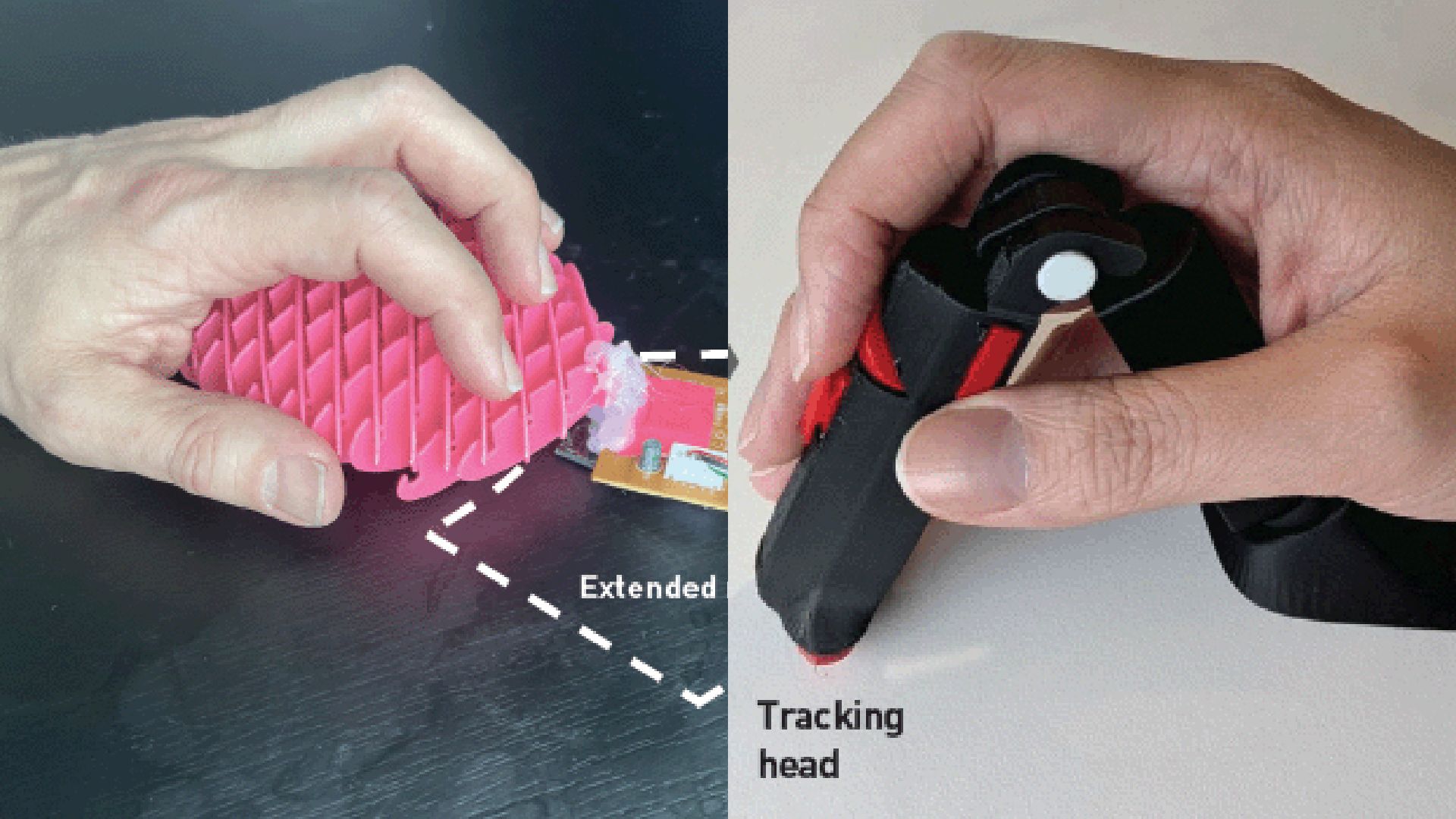🖱️ After 60 years, the computer mouse is radically changing
Follow us on Google News (click on ☆)
Researchers have found that current models, although ergonomic, impose significant mechanical constraints. The repetitive lifting movement to reposition the device excessively strains the wrist and forearm. This observation has led to fundamentally rethinking mouse design, drawing inspiration from flexible hand tools and recent advances in 3D printing.

Two mouse prototypes designed to reduce wrist injuries: one with a flexible mesh body, the other with a vertical A-shaped structure.
Credit: Jose Berengueres et Tony Yu, CC BY-NC-ND 4.0, Nazarbayev University
The first prototype, named Fleximouse, has a deformable mesh shell that responds to finger pressure. Rather than sliding the mouse on a surface, the user moves the cursor by modulating their hand grip. This approach eliminates the need for frequent repositioning, significantly reducing repetitive strain injuries at the joint level.
The second model adopts an A-frame architecture with a hinge, developed in partnership with the Melbourne School of Design. This vertical configuration keeps the forearm bones - radius and ulna - in natural alignment, avoiding the constant crossing characteristic of flat hand positions. Its simplified construction with fewer moving parts also promises better durability.
Tests conducted with 28 students, including avid gamers and eleven people suffering from chronic pain, revealed contrasting perceptions. While the Fleximouse was considered fun and effective for limiting wrist movements, some missed the scroll wheel.
Repetitive strain injuries related to mouse use
Repetitive strain injuries (RSI) result from modest but extremely frequent mechanical stresses on the same anatomical structures. At the wrist level, these stresses particularly affect the flexor tendons and the median nerve that passes through the carpal tunnel.
The maintained pronation position - palm facing down - combined with constant lateral movements causes compression of soft tissues. This compression can lead to tendon inflammation and, eventually, tunnel syndromes requiring surgical intervention.
Epidemiological studies show that intensive users perform up to 500 hourly repositionings of their mouse. Each movement involves not only the wrist but also the elbow joint and shoulder, creating a chain of ascending biomechanical stresses.
Prevention involves alternating postures and ergonomic adaptation of equipment. The new designs aim to reduce movement amplitude while promoting anatomically neutral positions for the joints.